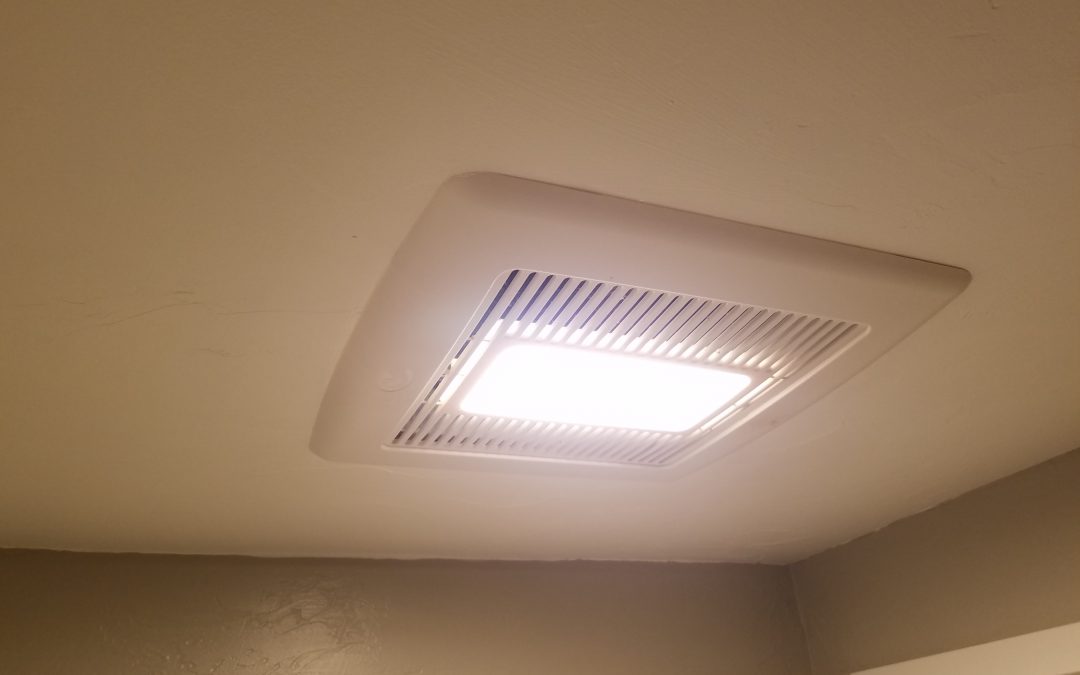The short answer: YES! Bathroom ventilation systems are designed to exhaust odors and damp air to the home’s exterior. Ventilation systems should be installed in all bathrooms, including those with windows, since windows will not be opened during the winter in cold climates.
It’s not always easy to tell whether the bathroom vent fan is operating as it should. Newer fans may be very quiet but work just fine. Older fans may be very noisy or very quiet. If an older fan is quiet, it may not be working well.
Signs of possible problems with bathroom vents:
- stains on the bathroom walls and/or ceiling
- corrosion of metal parts of the vent system
- visible mold on the walls and/or ceiling
- peeling paint or wallpaper
- frost on the interior of the bathroom window
- high indoor humidity
- improper duct termination
Bathroom ventilation fans should be periodically checked for dust buildup, which can impede air flow. Particles of moisture-laden animal dander and lint are also attracted to the fan because of its static charge. Homeowners should regularly clean dirty fan covers to prevent this kind of buildup.
Duct Termination
The most common defect related to the bathroom’s ventilation system is improper termination of the duct. Vents must terminate at the home’s exterior.
The most common improper terminations locations are:
- mid-level in the attic. These are easy to spot
- beneath the insulation in the attic. The duct may terminate beneath the insulation or there may be no duct installed; and
- under attic vents. The duct must terminate at the home’s exterior.
Improperly terminated ventilation systems may appear to work fine from inside the bathroom, so the homeowner or inspector may have to look in the attic or on the roof. Sometimes, poorly installed ducts will loosen or become disconnected at joints or connections.
Ducts that leak or terminate in the attic can cause problems from condensation. Warm, moisture-laden air will condense on cold attic framing, insulation and other materials. This condition has the potential to cause health and/or decay problems from mold, or damage to building materials, such as drywall. Moisture buildup also reduces the effectiveness of thermal insulation.
Mold growth is another undesirable consequence of improperly vented damp air. Even though mold growth may take place primarily in the attic and basement/crawlspace, mold spores can be sucked into the living area of a home by low air pressure, which is usually created by the expulsion of household air from exhaust fans in bathrooms and kitchens, and from clothes dryers and heating equipment.
Improper Ventilation
Ventilation ducts must be made from appropriate materials and oriented effectively in order to ensure that damp air is properly exhausted.
Ventilation ducts must:
- terminate outdoors. Ducts should never terminate within the building envelope;
- contain a screen or louvered (angled) slats at its termination to prevent bird, rodent and insect entry;
- be as short and straight as possible and avoid turns. Longer ducts allow more time for vapor to condense and also force the exhaust fan to work harder;
- be insulated, especially in cooler climates. Cold ducts encourage condensation;
- protrude at least several inches from the roof;
- be equipped with a roof termination cap that protects the duct from the elements; and
- be installed according to the manufacturer’s recommendations.
The following tips are also helpful. Ventilation ducts should:
- be made from inflexible metal, PVC, or other rigid material. Unlike dryer exhaust vents, they should not droop; and
- have smooth interiors. Ridges will encourage vapor to condense, allowing water to back-flow into the exhaust fan or leak through joints onto vulnerable surfaces.
Above all else, a bathroom ventilation fan should be connected to a duct capable of venting water vapor and odors to the outdoors. Mold growth within the bathroom or attic is a clear indication of improper ventilation that must be corrected in order to avoid structural decay and respiratory health issues for family members.
So after all of this technical information, again the answer to the question of “Do I really need to use my bathroom vent?” is a resounding YES!


Recent Comments